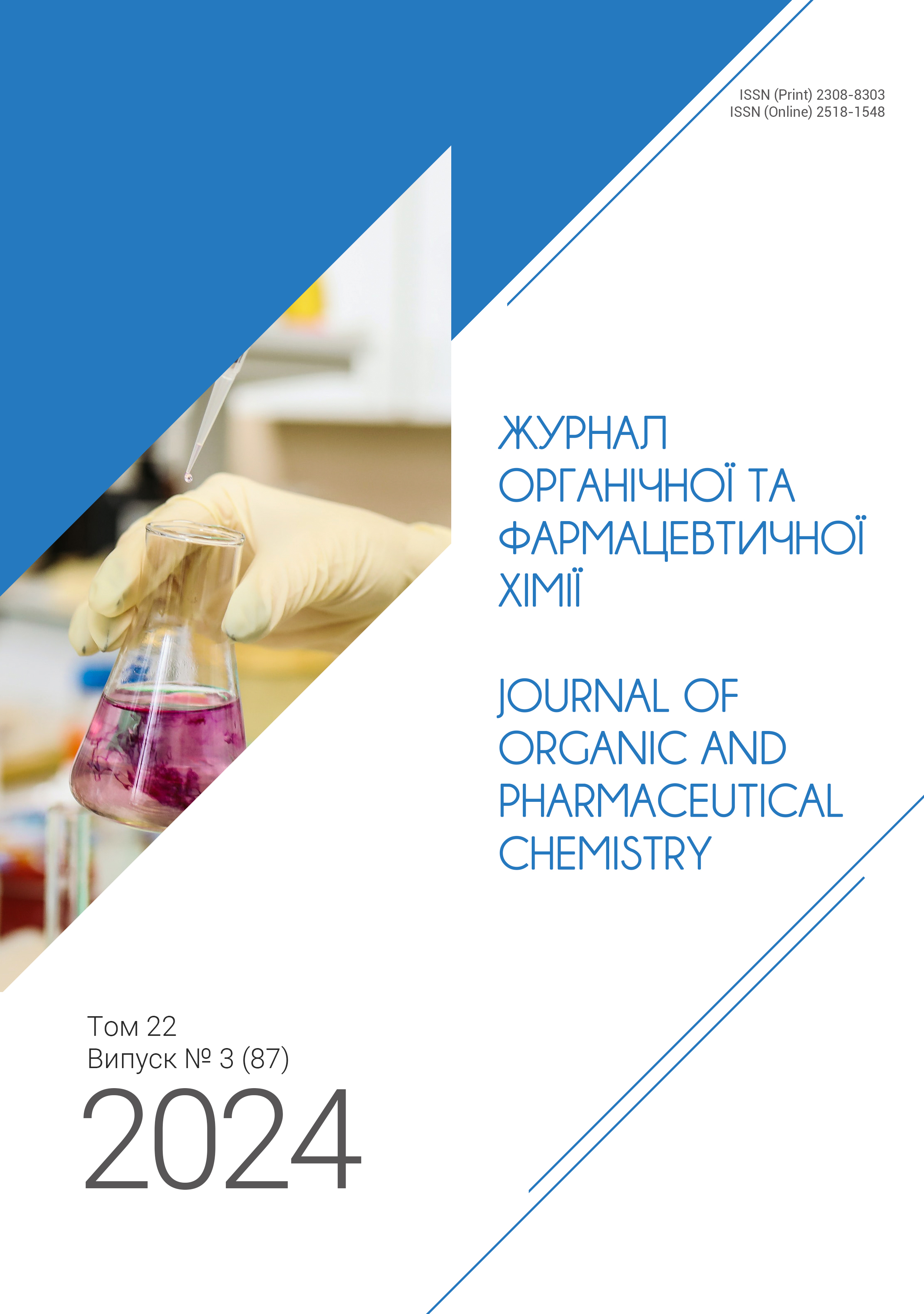High-Temperature Polymer Components Reimagined: Scalable Syntheses and de novo Routes to Structurally Versatile Precursors
DOI:
https://doi.org/10.24959/ophcj.24.317091Keywords:
heat-resistant polymers, monomers, oligomers, curing agents, triazine, phthalonitrile, borosilane, diamine, synthesisAbstract
Developing efficient and scalable synthetic protocols for key polymer precursors is crucial to advancing high-performance materials designed to withstand severe thermal environments. In this article, we report on the development of solid, high-yield methods for preparing structurally diverse building blocks, including s-triazine derivatives, phenyl-borosilane alkynyl oligomers, phthalonitrile-based monomers, and novel diamine curing agents on multi-gram to multi-hundred-gram scales. These carefully optimized procedures use readily available starting materials, mild conditions, and well-known synthetic transformations, thus addressing the longstanding challenges associated with their practical upscaling. The resulting library of monomers and oligomers offers a broad range of reactive functional groups (e.g., nitriles, alkynes, borosilane motifs), enabling future combinatorial-like strategies for the formation of advanced co-polymers with enhanced thermal stability, mechanical strength, and tunable properties suitable for high-temperature applications.
Supporting Agency
- The work was supported by the Ministry of Education and Science of Ukraine (grant No. 1/РН/25-024).
Downloads
References
- Cassidy, P. E.; Aminabhavi, T. M.; Reddy, V. S. Heat‐Resistant Polymers. In Kirk-Othmer Encyclopedia of Chemical Technology, 2000.
- Mark, H. F. Encyclopedia of polymer science and technology, 15 volume set; Wiley New York, NY, USA, 2014.
- Kumar, D.; Gupta, A. D.; Khullar, M. Heat‐resistant thermosetting polymers based on a novel tetrakisaminophenoxycyclotriphosphazene. Journal of Polymer Science Part A: Polymer Chemistry 2003, 31 (11), 2739-2745. https://doi.org/10.1002/pola.1993.080311109.
 |
| 
- Kumar, D.; Razdan, U.; Gupta, A. D. Heat-resistant polymers from melt-processable bisimido-bisphthalonitriles. Journal of Polymer Science Part A: Polymer Chemistry 1993, 31 (3), 797-804. https://doi.org/10.1002/pola.1993.080310326.
 |
| 
- Butt, M. S.; Akhtar, Z.; Zafar-uz-Zaman, M.; Munir, A. Synthesis and characterization of some novel aromatic polyimides. European Polymer Journal 2005, 41 (7), 1638-1646. https://doi.org/10.1016/j.eurpolymj.2005.01.016.
 |
| 
- Hasegawa, M.; Hoshino, Y.; Katsura, N.; Ishii, J. Superheat-resistant polymers with low coefficients of thermal expansion. Polymer 2017, 111, 91-102. https://doi.org/10.1016/j.polymer.2017.01.028.
 |
| 
- Krishnaraj, C.; Jena, H. S.; Leus, K.; Van Der Voort, P. Covalent triazine frameworks – a sustainable perspective. Green Chem. 2020, 22 (4), 1038-1071. https://doi.org/10.1039/c9gc03482j.
 |
| 
- Zhou, H.; Zhou, Q.; Zhou, Q.; Ni, L.; Chen, Q. Highly heat resistant and thermo-oxidatively stable borosilane alkynyl hybrid polymers. RSC Adv. 2015, 5 (16), 12161-12167. https://doi.org/10.1039/c4ra14352c.
 |
| 
- Inoue, K.; Nakamura, H.; Ariyoshi, S.; Takagi, M.; Tanigaki, T. Heat-resistant polymers prepared from [(4'-(2-vinyl)-4-biphenylyl)oxy]pentachlorocyclotriphosphazene. Macromolecules 2002, 22 (12), 4466-4469. https://doi.org/10.1021/ma00202a015.
 |
| 
- Yu, G.; Liu, C.; Wang, J.; Li, X.; Jian, X. Heat-resistant aromatic S-triazine-containing ring-chain polymers based on bis(ether nitrile)s: Synthesis and properties. Polymer Degradation and Stability 2010, 95 (12), 2445-2452. https://doi.org/10.1016/j.polymdegradstab.2010.08.011.
 |
| 
- Achar, B. N.; Fohlen, G. M.; Parker, J. A. Studies on heat-resistant thermosetting phthalocyanine polymers. Journal of Applied Polymer Science 1984, 29 (1), 353-359. https://doi.org/10.1002/app.1984.070290133.
 |
| 
- Zhou, J.; Wang, J.; Jin, K.; Sun, J.; Fang, Q. s-Triazine-based functional monomers with thermocrosslinkable propargyl units: Synthesis and conversion to the heat-resistant polymers. Polymer 2016, 102, 301-307. https://doi.org/10.1016/j.polymer.2016.09.027.
 |
| 
- Sastri, S. B.; Keller, T. M. Phthalonitrile polymers: Cure behavior and properties. Journal of Polymer Science Part A: Polymer Chemistry 1999, 37 (13), 2105-2111. https://doi.org/10.1002/(sici)1099-0518(19990701)37:13<2105::aid-pola25>3.0.co;2-a.
 |
| 
- Zhang, Y.; Huang, Y.; Liu, X.; Yu, Y. Studies on the silicone resins cured with polymethylsilazanes at ambient temperature. Journal of Applied Polymer Science 2003, 89 (6), 1702-1707. https://doi.org/10.1002/app.12433.
 |
| 
- Takekoshi, T.; Terry, J. M. High-temperature thermoset polyimides containing disubstituted acetylene end groups. Polymer 1994, 35 (22), 4874-4880. https://doi.org/10.1016/0032-3861(94)90746-3.
 |
| 
- Burchill, P. J. On the formation and properties of a high‐temperature resin from a bisphthalonitrile. Journal of Polymer Science Part A: Polymer Chemistry 2003, 32 (1), 1-8. https://doi.org/10.1002/pola.1994.080320101.
 |
| 
- Seino, H.; Mochizuki, A.; Ueda, M. Synthesis of aliphatic polyimides containing adamantyl units. Journal of Polymer Science Part A: Polymer Chemistry 1999, 37 (18), 3584-3590. https://doi.org/10.1002/(sici)1099-0518(19990915)37:18<3584::aid-pola5>3.0.co;2-r.
 |
| 
- Woiczechowski-Pop, A.; Dobra, I. L.; Roiban, G. D.; Terec, A.; Grosu, I. Synthesis and Structural Analysis of Some Podands with C3 Symmetry. Synth. Commun. 2012, 42 (24), 3579-3588. https://doi.org/10.1080/00397911.2011.585732.
 |
| 
- Mika, T. F.; Bauer, R. S. Curing agents and modifiers. In Epoxy resins, Routledge, 2018; pp 465-550.
Downloads
Additional Files
Published
How to Cite
Issue
Section
License
Copyright (c) 2024 National University of Pharmacy

This work is licensed under a Creative Commons Attribution 4.0 International License.
Authors publishing their works in the Journal of Organic and Pharmaceutical Chemistry agree with the following terms:
1. Authors retain copyright and grant the journal the right of the first publication of the work under Creative Commons Attribution License allowing everyone to distribute and re-use the published material if proper citation of the original publication is given.
2. Authors are able to enter into separate, additional contractual arrangements for the non-exclusive distribution of the journal’s published version of the work (e.g., post it to an institutional repository or publish it in a book) providing proper citation of the original publication.
3. Authors are permitted and encouraged to post their work online (e.g. in institutional repositories or on authors’ personal websites) prior to and during the submission process, as it can lead to productive exchanges, as well as earlier and greater citation of published work (see The Effect of Open Access).















